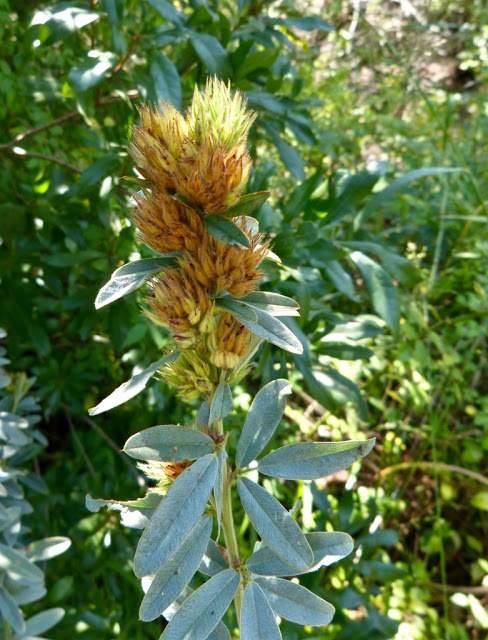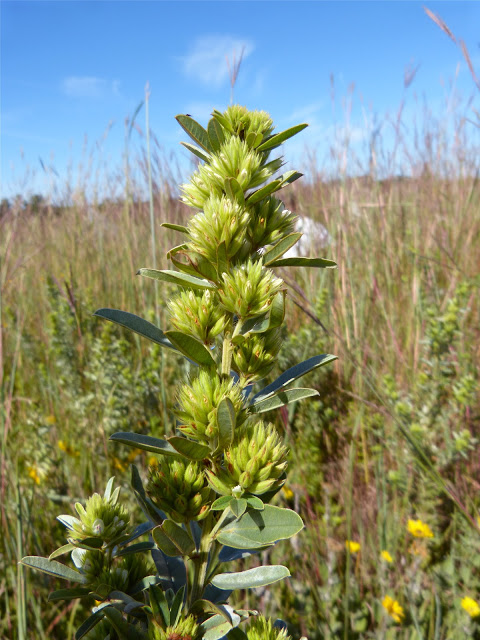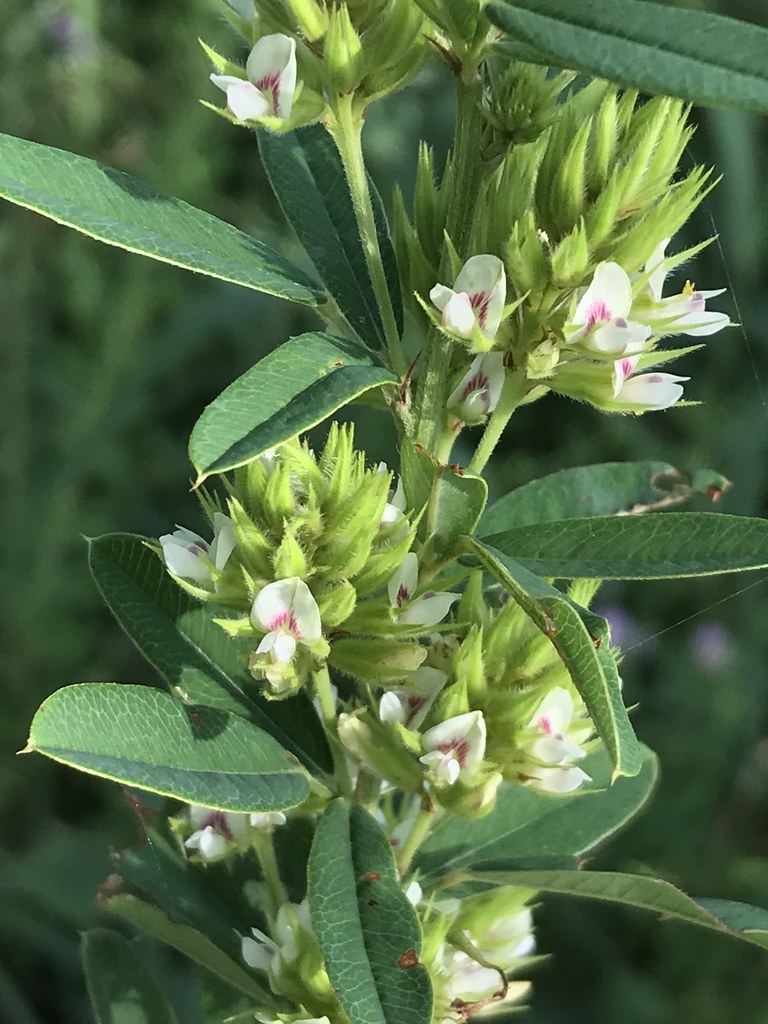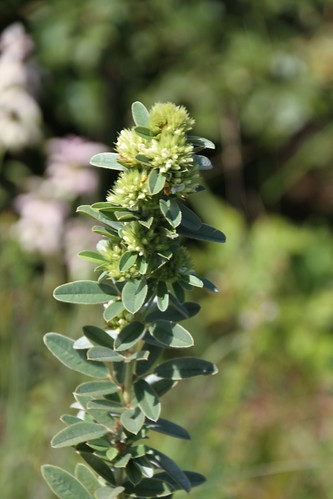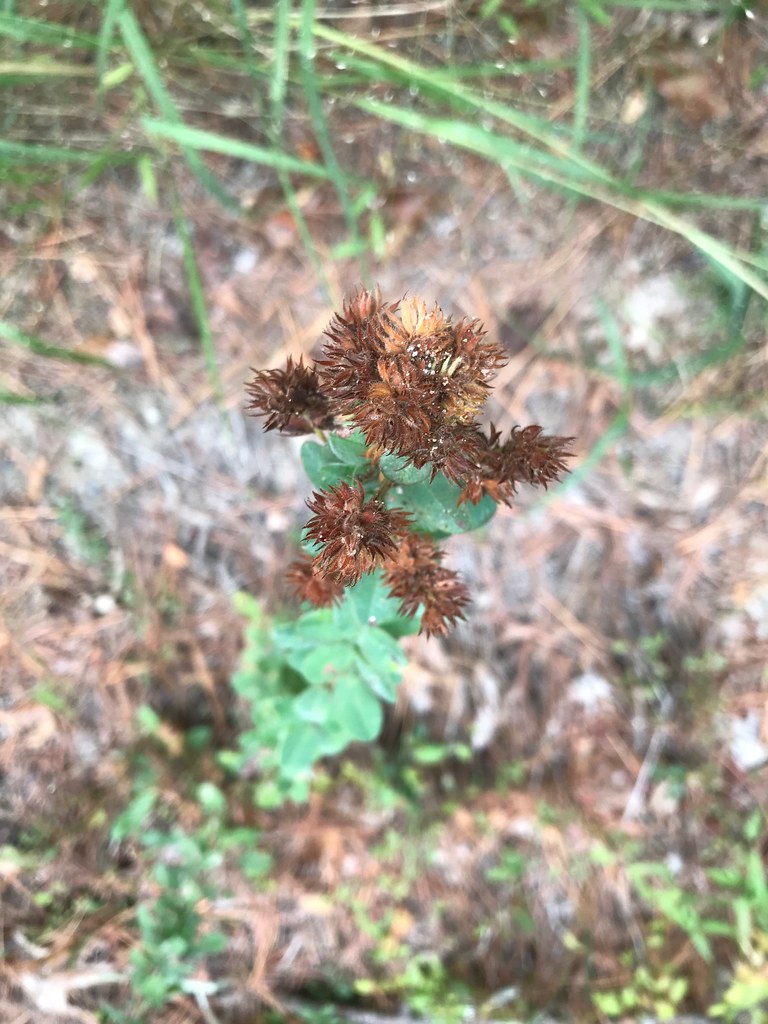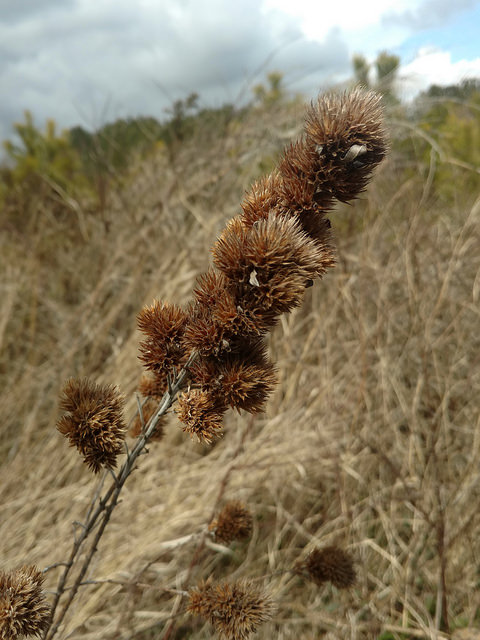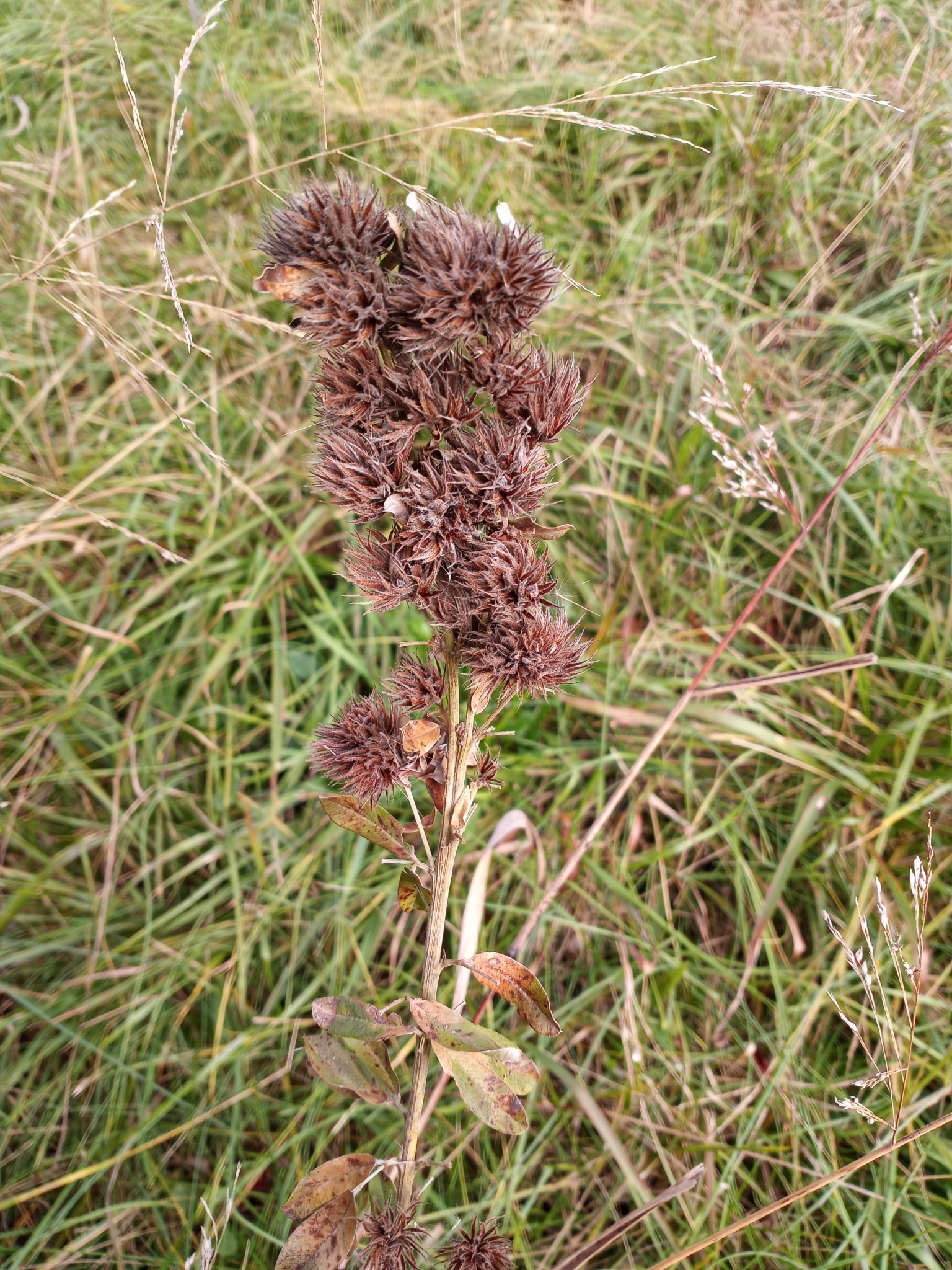Map Snapshot


















66 Records
Seasonality Snapshot
Source: Wikipedia
| Lespedeza capitata | |
|---|---|

| |
| Scientific classification | |
| Kingdom: | Plantae |
| Clade: | Tracheophytes |
| Clade: | Angiosperms |
| Clade: | Eudicots |
| Clade: | Rosids |
| Order: | Fabales |
| Family: | Fabaceae |
| Subfamily: | Faboideae |
| Genus: | Lespedeza |
| Species: | L. capitata
|
| Binomial name | |
| Lespedeza capitata Michx. (1803)
| |
| Synonyms[1] | |
|
Synonymy
| |
Lespedeza capitata is a species of flowering plant in the Fabaceae, or legume family, and is known by the common name roundhead bushclover, or roundhead lespedeza.[2] It is native to eastern North America, including eastern Canada and the eastern half of the United States.[3]
This plant is a perennial herb with erect stems growing up to 1.5 meters tall. The taproot may grow over two meters deep into the soil, with lateral roots reaching out one meter horizontally. The alternately arranged leaves are each made up of several leaflets. The plant is coated in silvery hairs. Flowers are borne in somewhat rounded clusters atop each stem. The flower is white with a purple spot.[4]
This plant is used as a component of seed mixes for vegetating rangeland. It is a good addition to livestock forage, as it is palatable and nutritious.[4] The plant can also be used in flower arrangements.[4]
This plant had a number of medicinal uses for Native American groups. It was used as a moxa to treat rheumatism. The Comanche used the leaves for tea.[5] The Meskwaki used the roots to make an antidote for poison.[6] The Pawnee people referred to the plant as rabbit foot (parus-asu) on account of the shape of its fruits and made a tea from the dry stems and leaves when coffee was not available.[7] Among the Omaha and Ponca peoples, it was known as the male buffalo bellow plant.[8]
The cultivar 'Kanoka' was released by the USDA in 1998.[9]
This plant may suffer from the rust pathogen Uromyces lespedezae-procaumbentis and the tar spot fungus Phyllachora lespedezae, as well as herbivory by the insect Pachyschelus laevigatus.[9]
Ecology
[edit]In the wild this plant grows in wooded areas, on prairies, and in disturbed habitat such as roadsides. It is tolerant of drought.[10] It fixes nitrogen.[4]
It hosts numerous lepidoptera species, such as the eastern tailed blue, gray hairstreak, hoary edge, northern cloudywing, orange sulphur, silver-spotted skipper, southern cloudywing, and spring azure.[11]
Its seeds are popular with several bird species,[11] in particular the northern bobwhite.[5]
References
[edit]- ^ Lespedeza capitata Michx. Plants of the World Online. Retrieved 4 September 2023.
- ^ Lespedeza capitata. USDA Plants Profile.
- ^ "Lespedeza capitata". Germplasm Resources Information Network. Agricultural Research Service, United States Department of Agriculture. Retrieved 19 January 2018.
- ^ a b c d Lespedeza capitata. USDA NRCS Plant Fact Sheet.
- ^ a b Lespedeza capitata.
- ^ Lespedeza capitata. University of Michigan Ethnobotany.
- ^ Weltfish, Gene (1965). The lost universe: Pawnee life and culture. Lincoln: University of Nebraska Press. p. 240. ISBN 0803209347.
- ^ Lespedeza capitata.[permanent dead link] Kansas State Extension.
- ^ a b Lespedeza capitata 'Kanoka'. USDA NRCS Manhattan Plant Materials Center.
- ^ Lespedeza capitata. Missouri Botanical Garden.
- ^ a b The Xerces Society (2016), Gardening for Butterflies: How You Can Attract and Protect Beautiful, Beneficial Insects, Timber Press.
 Media related to Lespedeza capitata at Wikimedia Commons
Media related to Lespedeza capitata at Wikimedia Commons
